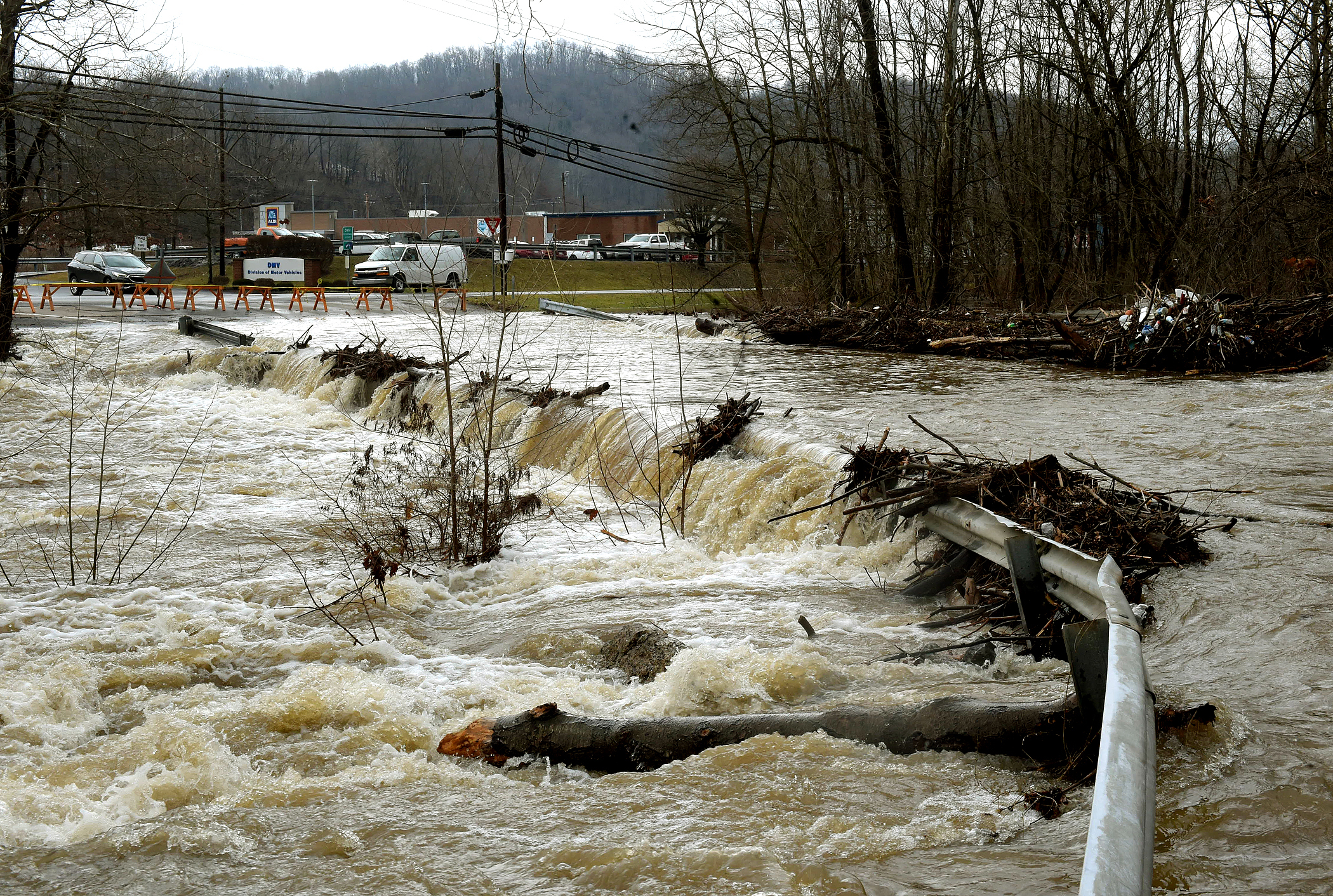WVU Today
Researchers at West Virginia University have used a localized flooding event to envision how human beings can live with the threat of water invading their living and working spaces. In understanding those tragic lived experiences, Nicolas Zegre and Jamie Shinn have developed a model for solving more far-reaching problems.
Zegre and Shinn, experts in hydrology and adaptation to climate change, respectively, used flooding in the Greenbrier County communities of Rainelle and White Sulphur Springs in 2016 to focus not only on what the floods did and the damage they caused, but how residents reacted and adjusted how and where they live in relationship to the water.
While their study is location specific, Zegre said it’s research that will continue to be valuable across the U.S. and the world as warming of the atmosphere alters weather patterns and extreme events, which in turn will place higher demand on local infrastructure and force communities to adapt to unpredictable flooding events—even those communities that are not near a stream.
“Floods happen and they happen in places we don’t expect them to happen and we can’t predict when and where they’re going to happen,” he said. “What we do know is that more intense rain is happening more frequently and so everybody should expect to be flooded out whether it’s their road, or a culvert that backs up or living next to a stream or downstream from an impoundment.
“Flooding does not discriminate.”
Zegre said floods should no longer be classified as “natural disasters,” but instead are anthropogenic — human-caused — thus managing natural lands and forests is very much a part of the solution because they can mitigate extreme events.
The 2016 flood killed 23 people in Greenbrier County, as streams, some of them no more than a few inches deep most days, rose swiftly to careen through homes and streets, leaving inches of mud and chaos in their wake. According to FEMA, 2030 families and households registered for possible assistance, with nearly 1,400 of them deemed eligible; 265 structures were demolished.
In the aftermath, Shinn interviewed 21 people to understand their lived experiences of both the flooding and the recovery. But none was able to determine the direct cause of the flooding in each community, some of them blaming clogged stormwater infrastructures, debris or clear-cut logging practices, as well as how steep topography, heavy rains and insufficient stormwater management combined to channel water into low-lying areas where some of the communities’ most vulnerable residents lived.
“We need community-driven answers about what the recovery process should look like because we know these types of events are only going to increase and they’re only going to get more extreme,” she said. “I am really interested in trying to understand the perspectives of people living in these contexts to find community-informed solutions.”
Zegre said West Virginia has already set the blueprint for response to the climate crisis and flooding in the Justice administration’s response to the COVID-19 pandemic—during which the governor has made the state a leader in terms of listening to “really smart, talented experts” and having them in the room to frame a response to the crisis.
The same formulaic response could be applied to climate change, he said.
Both Shinn and Zegre put being scientific experts on equal footing with people who know their communities and agree that having conversations to discuss residents’ wants and needs and then applying their expertise could help redesign communities so that humans can learn to better live with flooding.
However, results from their Greenbrier flood study suggest three critical findings that are necessary to move toward flood resilient communities:
- improving drainage infrastructure, particularly culverts, which are typically undersized.
- improving flood preparedness through education.
- improving institutional governance to work on behalf of the communities affected by flooding.
Those, he said, are applicable to any problem, just about anywhere.
“We have a real opportunity to reframe what we need to do,” Zegre said. “It’s trying to change how we do science; it’s trying to redistribute the power of knowledge and expertise and it’s using solidarity as the way forward.”
Zegre and Shinn, along with their former WVU colleagues Martina Angela Caretta and Rodrigo Fernandez, published their research in Frontiers in Water.
TWEET @DominionPostWV




